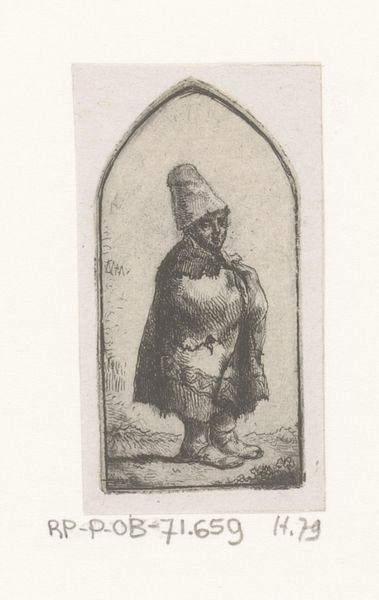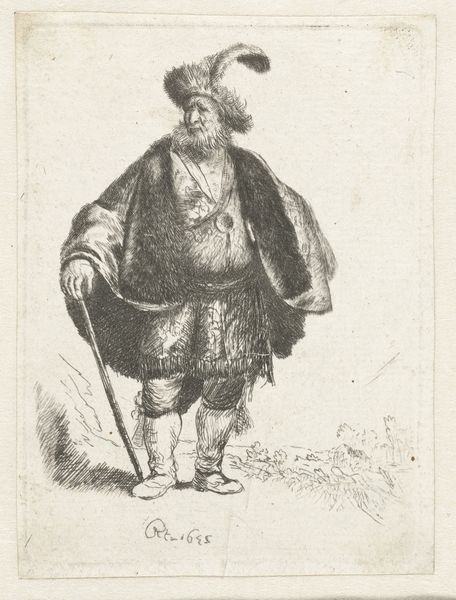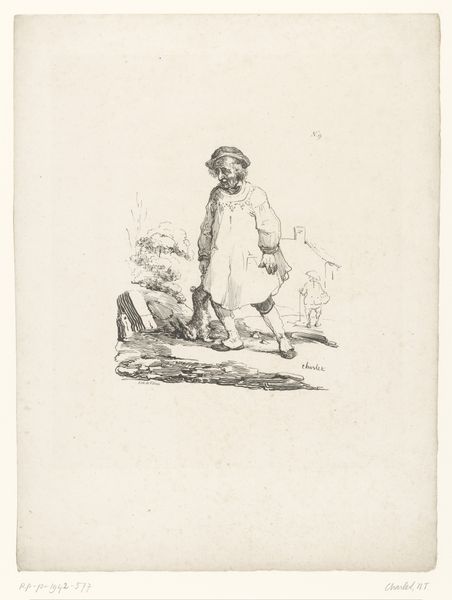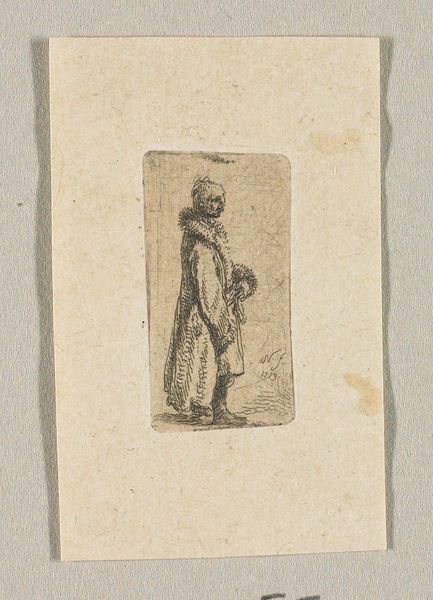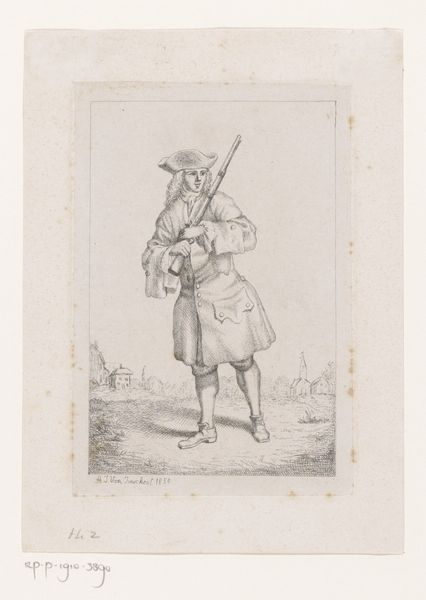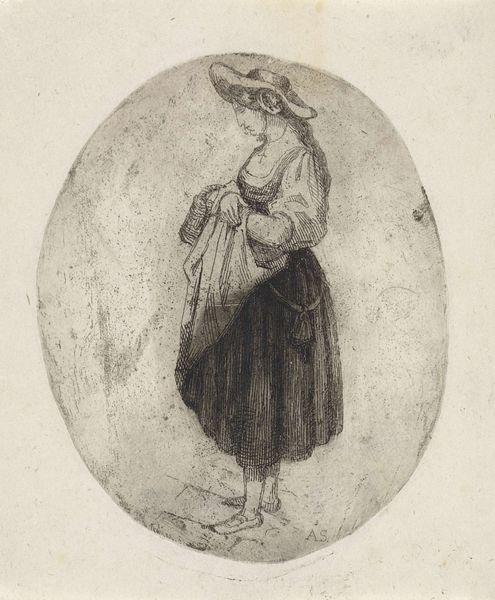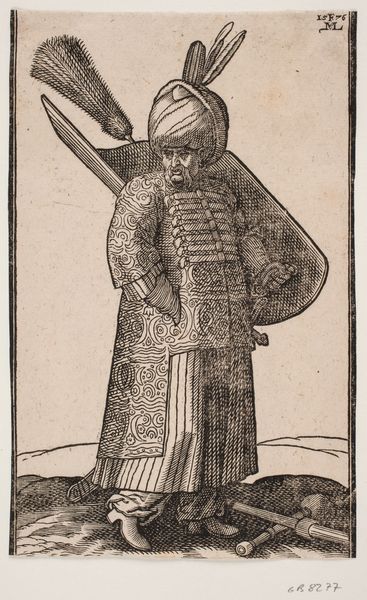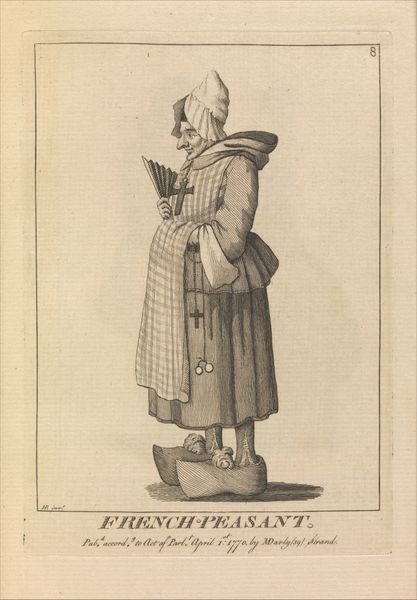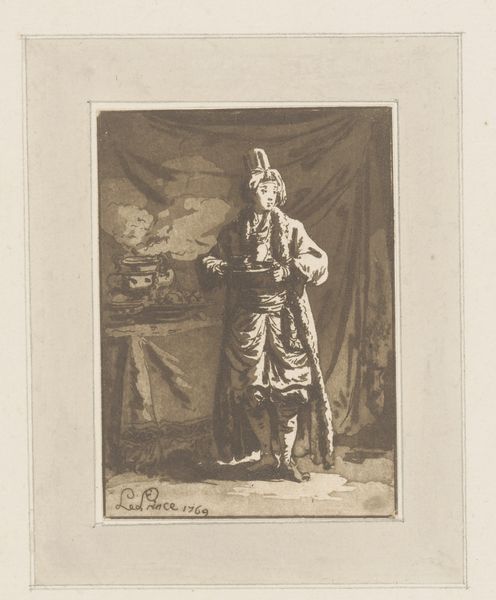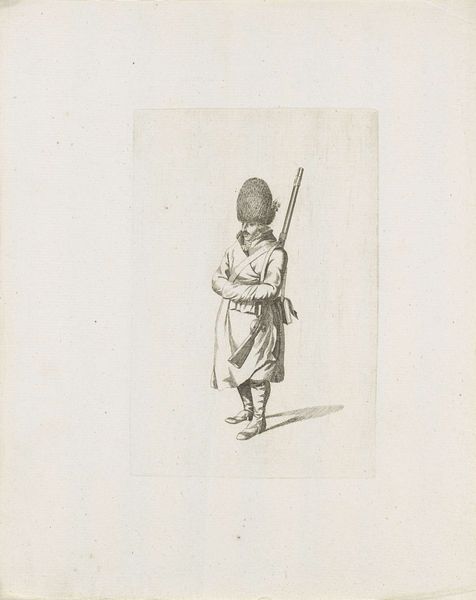
print, etching
#
neoclacissism
#
aged paper
#
toned paper
# print
#
etching
#
genre-painting
#
history-painting
Dimensions: 2 x 1 in. (5.1 x 2.6 cm) (image)2 9/16 x 1 5/8 in. (6.5 x 4.1 cm) (sheet)
Copyright: Public Domain
Curator: Here we have "Young Boy", an etching by Jean-Pierre Norblin de la Gourdaine, created in 1777. It’s part of the Minneapolis Institute of Art's collection. Editor: Oh, what a striking little figure! He looks so solemn, bundled up in what appears to be a rather rough cloak and a towering hat. Makes me wonder if he's about to embark on some grand adventure. Curator: The artwork demonstrates Norblin's technical skill in etching, a process involving acid to create lines on a metal plate, which are then inked and printed. You see a controlled use of line to define the figure’s form and the texture of his garments. Editor: There's an intriguing contrast, actually, between the delicate linework used for the boy's face and the more chaotic, scratchy lines that depict his cloak. Adds a layer of mystery to his character, don’t you think? It feels quite...dynamic, despite being a still image. Curator: Certainly, the artist employs these varying techniques to construct depth and emphasize certain visual elements. The arch-shaped frame also plays an interesting role in containing the narrative and focusing our gaze. We can locate in the arch the artistic inspiration rooted in Neoclassical tastes. Editor: Yes, that arch feels like a tiny proscenium. Like he’s on a stage, ready to deliver a line from a play about historical dramas and common lives—it adds to that feeling that he is involved in history or genre. Perhaps he represents someone from the lower social classes with this kind of portrayal. Curator: An astute interpretation. These types of prints allowed the wider distribution of images depicting historical or genre scenes, engaging audiences with representations of everyday life, which often reflect back into the collective imagination and visual culture of the period. Editor: Seeing it now, with the weight of that historical context, adds another dimension. The figure suddenly transforms, doesn't it? Curator: It is rewarding to unpack a composition from its elements and context; de la Gourdaine has certainly gifted us a dense work. Editor: Absolutely. Who knew such simple lines could contain so much history and feeling?
Comments
minneapolisinstituteofart about 2 years ago
⋮
Jean-Pierre Norblin de la Gourdaine was a French painter and printmaker active in Poland in the late 18th century. Norblin's charming miniature etchings, representing mostly male heads, street sellers, and vagabonds, reflect both in subject and technique the profound influence of Rembrandt's prints. Norblin was also drawn to Polish subjects, capturing the unfamiliar, exotic world around him in his depictions of men with colossal fur hats and curled moustaches, Cossacks, and Polish historical figures.
Join the conversation
Join millions of artists and users on Artera today and experience the ultimate creative platform.
